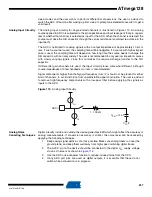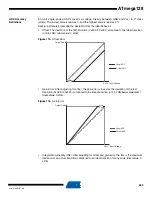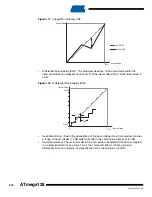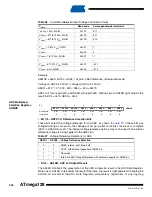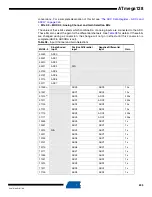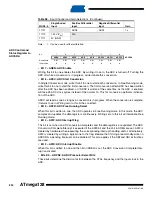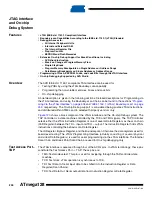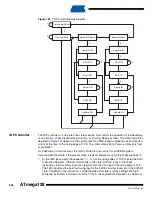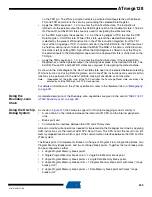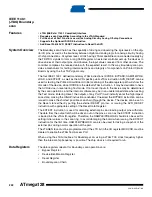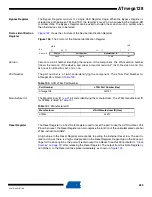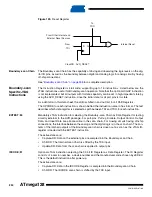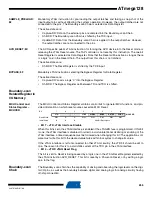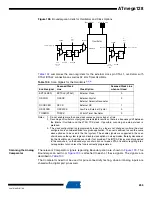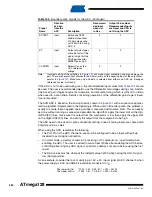
249
2467S–AVR–07/09
ATmega128
on the TDO pin. The JTAG Instruction selects a particular Data Register as path between
TDI and TDO and controls the circuitry surrounding the selected Data Register.
•
Apply the TMS sequence 1, 1, 0 to re-enter the Run-Test/Idle state. The instruction is
latched onto the parallel output from the Shift Register path in the Update-IR state. The Exit-
IR, Pause-IR, and Exit2-IR states are only used for navigating the state machine.
•
At the TMS input, apply the sequence 1, 0, 0 at the rising edges of TCK to enter the Shift
Data Register – Shift-DR state. While in this state, upload the selected Data Register
(selected by the present JTAG instruction in the JTAG Instruction Register) from the TDI
input at the rising edge of TCK. In order to remain in the Shift-DR state, the TMS input must
be held low during input of all bits except the MSB. The MSB of the data is shifted in when
this state is left by setting TMS high. While the Data Register is shifted in from the TDI pin,
the parallel inputs to the Data Register captured in the Capture-DR state is shifted out on the
TDO pin.
•
Apply the TMS sequence 1, 1, 0 to re-enter the Run-Test/Idle state. If the selected Data
Register has a latched parallel-output, the latching takes place in the Update-DR state. The
Exit-DR, Pause-DR, and Exit2-DR states are only used for navigating the state machine.
As shown in the state diagram, the Run-Test/Idle state need not be entered between selecting
JTAG instruction and using Data Registers, and some JTAG instructions may select certain
functions to be performed in the Run-Test/Idle, making it unsuitable as an Idle state.
Note:
Independent of the initial state of the TAP Controller, the Test-Logic-Reset state can always be
entered by holding TMS high for 5 TCK clock periods.
For detailed information on the JTAG specification, refer to the literature listed in
Using the
Boundary-scan
Chain
A complete description of the Boundary-scan capabilities are given in the section
(JTAG) Boundary-scan” on page 252
.
Using the On-chip
Debug System
As shown in
, the hardware support for On-chip Debugging consists mainly of
•
A scan chain on the interface between the internal AVR CPU and the internal peripheral
units
•
Break point unit
•
Communication interface between the CPU and JTAG system
All read or modify/write operations needed for implementing the Debugger are done by applying
AVR instructions via the internal AVR CPU Scan Chain. The CPU sends the result to an I/O
memory mapped location which is part of the communication interface between the CPU and the
JTAG system.
The Break point Unit implements Break on Change of Program Flow, Single Step Break, two
Program Memory Breakpoints, and two combined break points. Together, the four break points
can be configured as either:
•
4 single Program Memory break points
•
3 Single Program Memory break point + 1 single Data Memory break point
•
2 single Program Memory break 2 single Data Memory break points
•
2 single Program Memory break 1 Program Memory break point with mask (“range
break point”)
•
2 single Program Memory break 1 Data Memory break point with mask “range
break point”.



